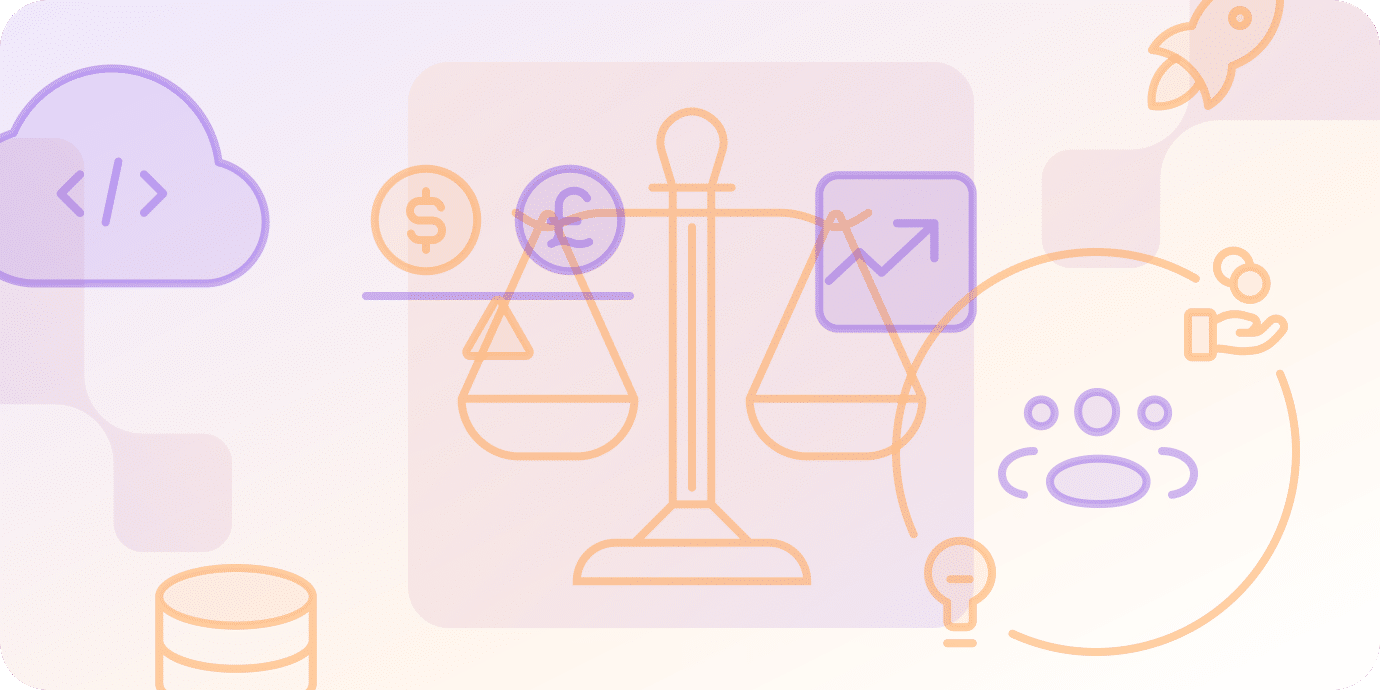SaaS 창업
SaaS 펀딩이란 무엇인가요?

SaaS 펀딩이란 무엇입니까?
SaaS 자금 조달은 Software as a Service 비즈니스에 맞춰진 자금 조달 방식으로, 반복 수익 및 성장 지표에 중점을 둡니다. 채용, 마케팅, 영업 및 제품 개발과의 관련성은 비즈니스 성장 패턴과의 연관성을 시사합니다.
SaaS 기업은 수익 창출을 위해 장기적인 투자 기간이 필요한 구독 기반 비즈니스 모델 때문에 특정한 요구 사항이 있는 경우가 많습니다.
개인 보증이나 지분 희석이 필요하지 않기 때문에 수익 기반 자금 조달과 같은 대체 자금 조달 방법이 점점 더 보편화되고 있습니다. 설립자는 통제권을 유지하며 회사의 신용 점수에는 변동이 예상되지 않습니다.
다양한 SaaS 펀딩 옵션은 무엇입니까?
SaaS 스타트업을 위한 자금 조달 옵션은 여러 가지가 있으며, 각각 고유한 특징이 있습니다.
- 벤처 금융은 확장 및 확장성 노력을 위한 자금의 가용성과 관련이 있습니다.
- 엔젤 투자자는 초기 단계 투자와 지침을 제공할 수 있습니다.
- 부트스트래핑 방식을 통해 SaaS 설립자는 완전한 통제권을 유지하고 지분 희석을 방지할 수 있습니다.
- 크라우드 펀딩은 재정적 기능 외에도 제품과 관련된 커뮤니티 의식을 형성할 수 있습니다.
- 수익 기반 자금 조달은 수익과 연계된 자금을 제공함으로써 주식 희석을 방지합니다.
- 벤처 캐피탈에 투자할 때 많은 통제권과 지분을 포기하는 것이 흔히 필요합니다.
- 벤처 캐피탈리스트에 비해 엔젤 투자자는 자금이 적을 수 있습니다.
- 부트스트래핑 시 성장 범위는 재정 자원의 가용성과 관련이 있을 수 있습니다.
- 크라우드펀딩의 성공은 보장되지 않으며 집중적인 홍보가 필요합니다.
- 수익이 급격히 증가하면 수익 기반 자금 조달이 기존 부채보다 더 많은 비용이 발생할 수 있습니다.
SaaS 회사는 자금 조달을 받기 전에 어떤 요소들을 고려해야 할까요?
SaaS 기업은 자사에 가장 적합한 조치를 선택했는지 확인하기 위해 자금 조달을 모색하기 전에 여러 필수 변수를 신중하게 고려해야 합니다. 월간 반복 수익(MRR), 연간 반복 수익(ARR), 고객 확보 비용(CAC)과 같은 중요한 KPI와 함께 현재 성장 단계, 특정 자금 조달 요구 사항, 접근 가능한 자산 및 위험 허용 범위를 파악해야 합니다.
낮은 이탈률과 빠른 MRR 성장을 보이는 기업들은 CAC와 운영 비용을 면밀히 검토하는 투자자들에게 우호적인 평가를 받습니다. 확장 가능한 비즈니스 모델, 명확한 제품-시장 적합성, 그리고 견인력에 대한 증거는 자금 조달 가능성을 크게 높입니다.
반복적인 매출은 인지된 위험을 줄이고 자금 조달 기회를 열어주기 때문에 명확한 계획이 수립되고 지속 가능한 고객 확보가 입증되며 제품-시장 적합성이 확인되었을 때 자금 조달을 모색하는 것이 가장 좋습니다.
자금 조달은 SaaS 기업의 활주로와 성장에 어떤 영향을 미칩니까?
자금 조달은 운영 비용을 충당하고 확장하는 데 필요한 자원을 제공하기 때문에 SaaS 기업의 활주로와 성장에 상당한 영향을 미칩니다. 벤처 부채는 희석률은 낮지만 위험과 상환 의무가 있는 반면, 벤처 캐피탈은 빠른 확장을 지원할 수 있지만 소유권이 희석될 수 있습니다.
2022년에는 초기 단계 SaaS 기업에 350억 달러 이상이 투자되었으며, 이는 성장 목표 달성을 위한 투자의 중요성을 강조합니다. 자금 출처와 관계없이 SaaS 스타트업은 현재와 같이 부트스트래핑이 점점 어려워지는 경제 상황에서 런웨이를 관리하고 지속 가능한 성장을 유지하기 위해 재정적 규율을 강조해야 합니다.
SaaS 부채 금융의 장단점은 무엇입니까?
SaaS 부채 금융은 지분을 줄이지 않고 확장을 가속화하는 수단을 제공하므로 SaaS 부채 금융의 장단점을 이해하는 것이 중요합니다. 이러한 조치를 취하기 전에 회사의 재무 상태와 상환 능력을 신중하게 평가하는 것이 필수적입니다.
비희석적인 부채 금융은 투자자와 기업가가 소유 지분을 유지할 수 있도록 합니다.
부채 자금 조달에는 일반적으로 이사회 의석이나 의결권이 포함되지 않으므로 사업의 전략적 방향을 지속적으로 관리할 수 있습니다.
자금 조달 비용의 상한선 설정은 재무 계획 프로세스의 예측 가능성에 영향을 미칠 수 있습니다.
부채 조달에는 종종 수수료와 금리가 포함되며, 이는 전체 자본 비용에 영향을 미칠 수 있습니다.
상환 의무의 존재는 다음의 변화와 관련이 있을 수 있습니다. 현금 흐름, 특히 매출 성장이 감소하거나 비용이 급증하는 경우.
대출 기관은 담보를 요청할 수 있으며, 이는 채무 불이행 상황 발생 시 사업 자산에 영향을 미칩니다.
SaaS 회사에서 벤처 부채는 어떻게 작동합니까?
벤처 금융은 SaaS 기업에 비희석 자본을 제공하며, 이는 종종 확장을 늘리거나 런웨이를 확장하는 데 사용됩니다. 10%에서 15% 사이의 금리, 초기 이자만 지급 기간, 그리고 후속 전체 상환을 포함하는 기간 대출이 일반적인 계약 구성 요소입니다.
스톡 워런트(lender에게 특정 가격으로 비즈니스 지분을 매수할 권리를 부여하는 것)는 벤처 금융 계약의 또 다른 일반적인 특징입니다. SaaS 비즈니스는 벤처 금융이 일반적으로 재융자 또는 재협상을 통해 회사가 성장함에 따라 재정적 유연성을 제공한다는 점을 알아야 합니다.
인보이스 팩토링은 언제 SaaS 기업에 적합한 솔루션인가요?
SaaS 조직은 미결제 송장에 묶인 자본을 사용하여 현금 흐름에 영향을 미치는 메커니즘으로 인보이스 팩토링을 고려할 수 있습니다. 이 방법은 운전 자본 요구 사항이 반복되는 월별 또는 분기별 매출과 연결된 스타트업에 적용될 수 있습니다.
인보이스 팩토링을 통해 운전 자본에 즉시 접근할 수 있습니다.
장기 부채 없이 재정적 유연성을 제공하며 스타트업 친화적입니다.
인보이스 팩토링이 적절하게 처리되지 않으면 고객 관계가 손상될 수 있습니다.
소비자는 팩토링 프로세스를 일종의 채권 추심으로 볼 수 있으며, 이는 소비자의 만족도와 신뢰도를 떨어뜨릴 수 있습니다.
SaaS 기업에게 기존 은행 대출의 장단점은 무엇입니까?
SaaS 기업은 전통적인 은행 대출을 통해 자금을 조달할 수 있습니다. 그러나 장점과 단점을 모두 고려해야 합니다.
일반적으로 전통적인 은행 대출은 다른 부채 금융보다 금리가 낮습니다.
이는 비교적 안정적인 상환 기간 제공을 통해 재무 계획과 관련이 있습니다.
SaaS 기업은 종종 전통적인 은행에서 대출을 확보하기 위해 요구하는 담보가 부족합니다.
SaaS 스타트업은 엄격한 조건과 성공적인 거래 실적을 보유한 기업에 대한 선호로 인해 이러한 대출을 받는 데 어려움을 겪을 수 있습니다.
많은 전통적인 은행에서 사용하는 비즈니스 전략은 SaaS 스타트업에 대한 자금 지원 결정에 영향을 미칩니다.
철저한 평가를 위해서는 실사 및 전문가의 지침과 함께 위의 기법들을 결합하는 것을 잊지 마십시오.
자금 조달은 SaaS 고객 관계에 어떤 영향을 미칩니까?
SaaS 고객 관계는 보다 개별화된 서비스와 향상된 지원을 통한 자금 조달의 영향을 크게 받습니다. 전략적 의사 결정을 위해서는 이점과 단점 모두를 이해해야 합니다.
결론
SaaS 자금 조달과 관련하여 구독 비즈니스에는 선택할 수 있는 몇 가지 옵션이 있습니다. 그러나 구조, 지분, 통제권 및 상환 상황 측면에서 차이가 있습니다. 한 가지 대안을 결정하려면 이러한 자금 조달 옵션이 제공하는 모든 장단점을 신중하게 고려해야 합니다.
또한 MRR, ARR, CAC와 같은 주요 지표를 모니터링하는 것도 결정의 일부여야 합니다.
올바른 자금 조달 옵션은 궁극적으로 더 나은 고객 관계, 사용자 유지 및 장기적인 회사 성장으로 이어진다는 점을 언급하는 것이 중요합니다.